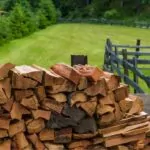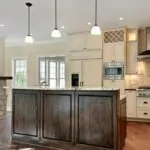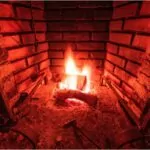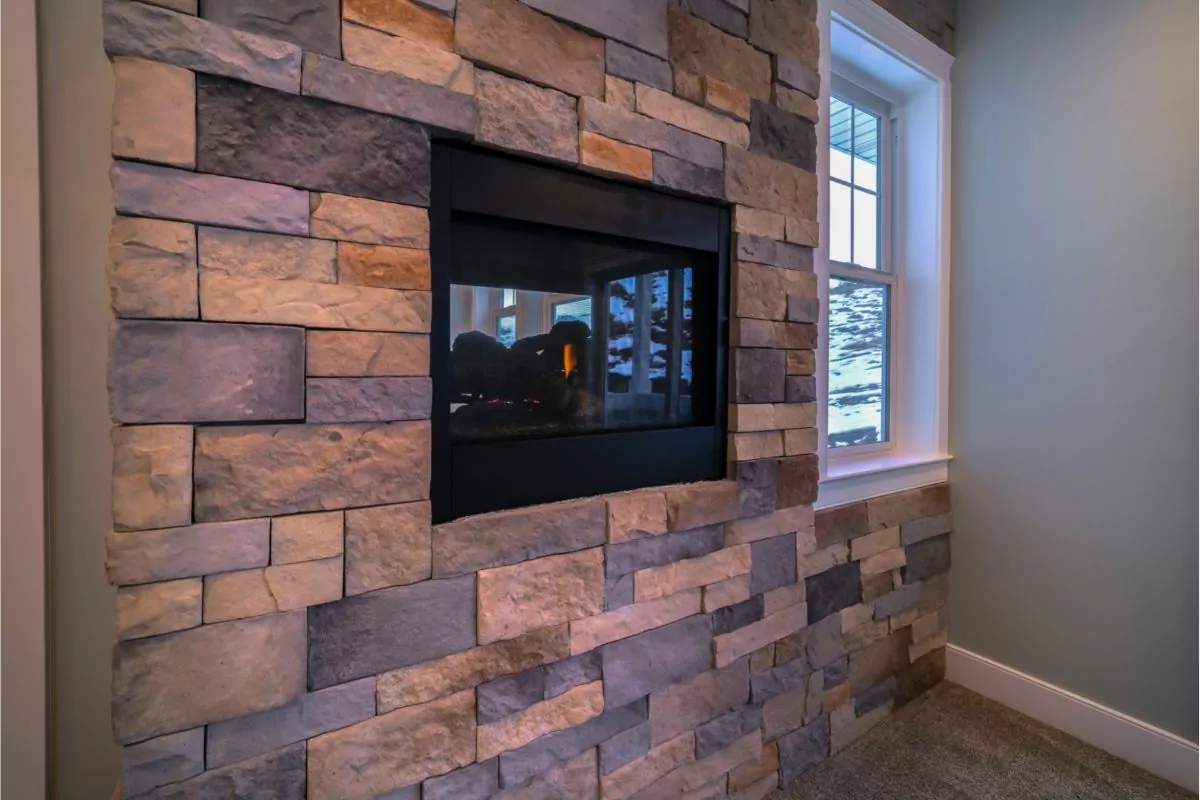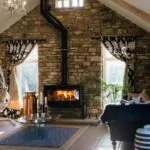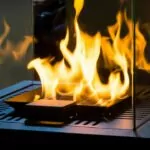Fireplaces are cozy, beautiful features to have in your home. However, they can also be very dangerous, especially for babies who are just learning to crawl or walk.
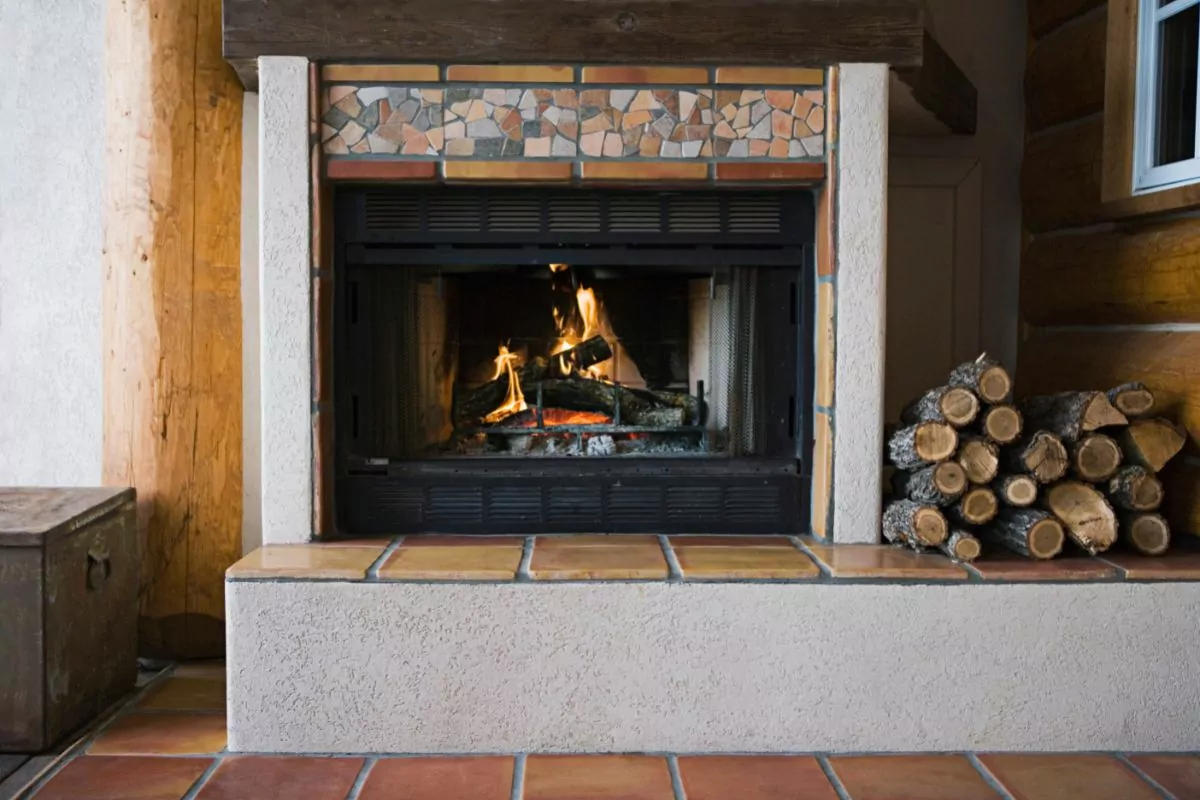
There are two parts of a fireplace you need to babyproof, the fireplace itself and the hearth. There are also important things you need to know about fireplace safety, which we will discuss in the article below. So, read on for more!
Baby Proofing Part 1: The Fireplace
Step 1: Change Your Perspective
The best way to know how to babyproof your fireplace is to look at it from the baby’s perspective. So, get into a crawling position to be able to see things how they would see them.
Take note of anything that may be dangerous to your children – such as hot spots, sharp edges, and any interesting items your child may reach out for.
Once you have identified all of these factors, you can work on babyproofing them. For example, you need to remove flammable objects from around the fireplace, so your child cannot access them.
Step 2: Invest In A Gate
Because your fireplace has sharp edges and hot spots, it is best to invest in a gate to surround the fireplace. The gate can fence the fireplace in so your child cannot reach it at all, but you can easily go back and forth to light the fire.
However, it is important to note that you should never leave your child unattended by a lit fire, even when you have a gate present.
It is also important to note that you should make sure you have invested in a gate, and not a freestanding fireplace screen. Babies can pull these screens down and will be able to access the fireplace with ease.
Alternatively, they could pull it down on themselves and cause themselves an injury.
Fireplace gates are usually made from heat-resistant materials and will be able to anchor to the wall.
Step 3: Invest In A Fireplace Door
If you do not want to, or cannot invest in a fireplace gate, then you should consider investing in a fireplace door. Fireplaces doors also act as excellent barriers between the fire and your child.
However, please note that glass fireplace doors will be very hot to the touch.
If you do invest in a fireplace door, make sure that you lock it when not in use. Small children are very curious and if they can open the fireplace door, they will. Consider investing in childproof locks to babyproof your fireplace.
Step 4: Check Pre-Installed Locks
Some fireplaces will already have locks built-in. If this applies to your fireplace, check that it works and that your child will not be able to open them.
Step 5: Remove Fireplace Tools
You must ensure your baby cannot access fireplace tools. This means any lighters or matches should not be accessible to your child, and neither should lighter fluid or other fire accelerants.
It is a good idea to invest in a drawer or cupboard to place these items so you or other adults can access them with ease, but your children cannot.
Baby Proofing Part 2: The Hearth
Step 1: Invest In A Large Fireplace Gate
Sometimes, the hearth will move past the exterior of the fireplace. In these instances, a simple fireplace gate will not be enough babyproofing, and you will need to invest in a larger gate to keep your baby safe.
Hearths often have sharp edges and raised steps which can cause injury to your child, so it is important to invest in a gate that covers it and stops your child from being able to access it.
Step 2: Purchase A Hearth Pad
Because many hearths have sharp edges, it is best to purchase a hearth pad to babyproof them. Hearth pads are typically made from heat-resistant materials, so are safe to place around fires.
They can be attached to hearths using double-sided tape or glue.
Step 3: Invest In Interlocking Floors
If your hearth is flat, then you can install floors that interlock! Many parents often use these as play areas on their brick or hard stone floors as a form of babyproofing, too!
However, it is important to ensure you are investing in a flame-resistant interlocking floor. Many of them retain heat and are unsafe for use around fires.
With these interlocking floors, if your child falls, they will fall onto soft materials as opposed to hard floors that could cause injury.
Step 4: Decorate With Cushions
If your fireplace is never in use, then you can decorate your hearth with cushions! These will make the hearth softer and safer for the baby should they crawl or walk close to it.
However, you should never use this method of babyproofing your fireplace if you frequently light fires, as this is a significant safety hazard for the household.
Baby Proofing A Fireplace Part 3: Basic Safety Tips
Of course, sometimes accidents happen. Baby Proofing is not always a failsafe. So, if they do, here are some basic fireplace safety tips.
Tip 1: Understand Treatment For Burns
It is always good to understand basic first aid just in case an accident happens in your household.
If your child burns themselves, but the burn is not severe and small, then run cold water over the affected area and then wrap up the wound in a bandage to prevent infections.
It is also a good idea to keep your first-aid kit fully stocked and close by. However, if you are concerned or unsure of what to do, it is wise to seek out the opinion of a doctor or medical professional.
Tip 2: Install A Smoke Detector
Of course, you should already have a smoke detector installed in your home, and you should perform a check to make sure it works.
However, you should also install a smoke detector in the same room as the fireplace for an extra safety measure.
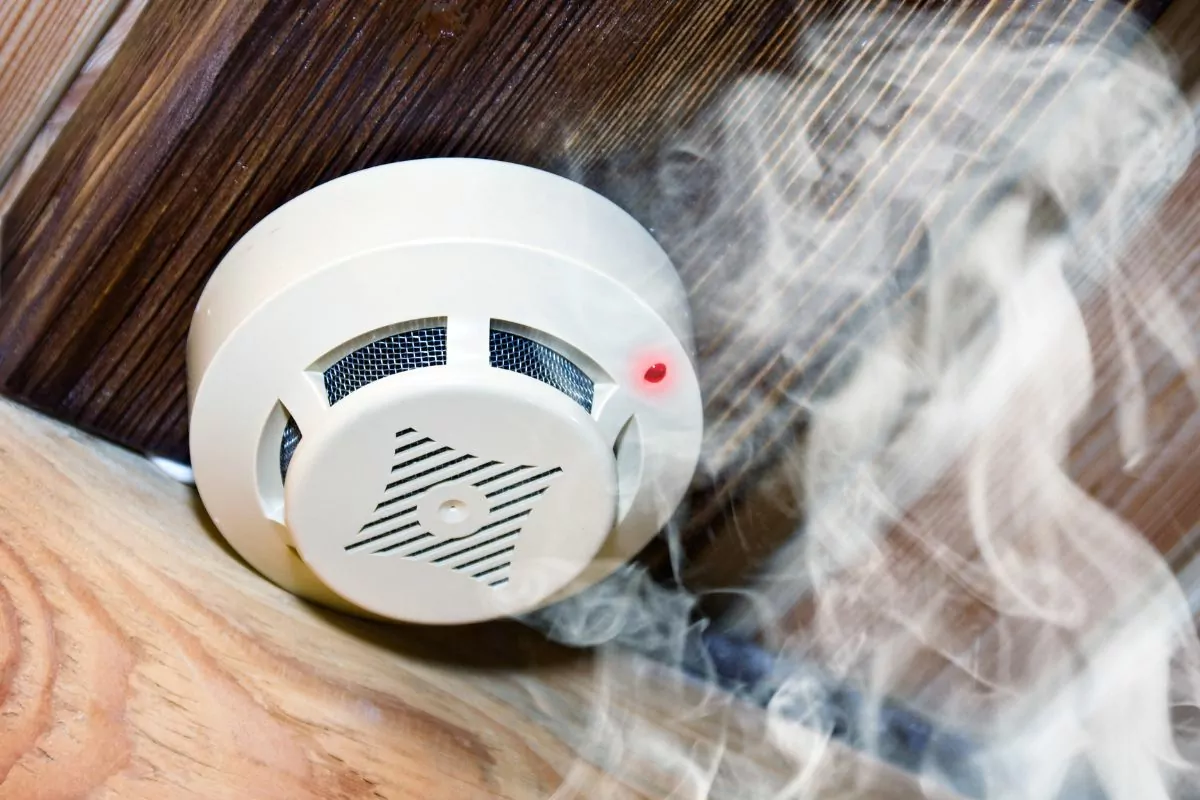
Then, all you need to do to ensure your home is safe is check the smoke detector on a monthly basis and change the batteries every year.
Tip 3: Install A Carbon Monoxide Detector
As before, you should already have a carbon monoxide detector in your home, but it is a good idea to install one close to the fireplace. After this, you should test it monthly to ensure it is working.
An extra tip for carbon monoxide safety is to have a window open when you are burning a fire because this will lessen the amount of carbon dioxide in the room produced by the fire.
Tip 4: Perform Regular Inspections Of The Fireplace
Even when you are confident your fireplace is baby proofed, you should still perform frequent inspections to ensure everything is in working order. It is important to do this with a flashlight so you can see the fireplace properly.
So, you need to clean your fireplace of debris and dirt regularly, and you should also check your outtake vents and chimneys to ensure there is no dirt or debris causing a blockage.
This will also reduce the carbon monoxide risk to your home.
Additionally, if your fireplace burns gas, you will need to perform additional checks to ensure there is no damage to the glass doors, such as cracks.
It is also a good idea to inspect the gas igniter and shut-off valve to ensure there is no natural gas leaking out and into your home.
Finally, it is important to make sure your babyproofing gate is secured to the wall regularly.
Tip 5: Request A Professional Inspection
Of course, while you should inspect your fireplace regularly, it is always worth requesting an inspection from a professional at least once a year. This is to ensure your safety, as well as the safety of your baby.
So, if during your own inspections you see structural damage, it is best to contact a licensed chimney professional.
Additional Tips For Baby Proofing The Fireplace
Here are some additional tips for babyproofing the fireplace!
- After you have babyproofed the fireplace, test it from the perspective of your child. Crawl around the fireplace to check for any hazards you may have accidentally missed.
- Even if your fireplace is merely decorative, you will still need to babyproof it to protect your child from its raised areas, hard surfaces, and sharp edges.
- Let your older children watch as you inspect the fireplace so they can understand fireplace safety.
- You should always supervise your child around fireplaces, even after you have babyproofed them.
- You should babyproof your fireplace before your child starts crawling.
Final Thoughts
It is important to babyproof your fireplace to prevent injury to your child. Not only will you need to babyproof the fireplace itself, but you will also need to babyproof the hearth and learn additional safety tips just in case an accident does happen.
Luckily, there are many precautions and actions you can take to ensure your child’s safety around the fireplace.
- Discover the Ease and Elegance of Zero-Clearance Fireplaces - July 24, 2023
- How to Build a Frame for an Electric Fireplace Insert: A Step-by-Step Guide - July 16, 2023
- Bedroom Fireplace Ideas That Will Make You Want to Snuggle Up - July 16, 2023


